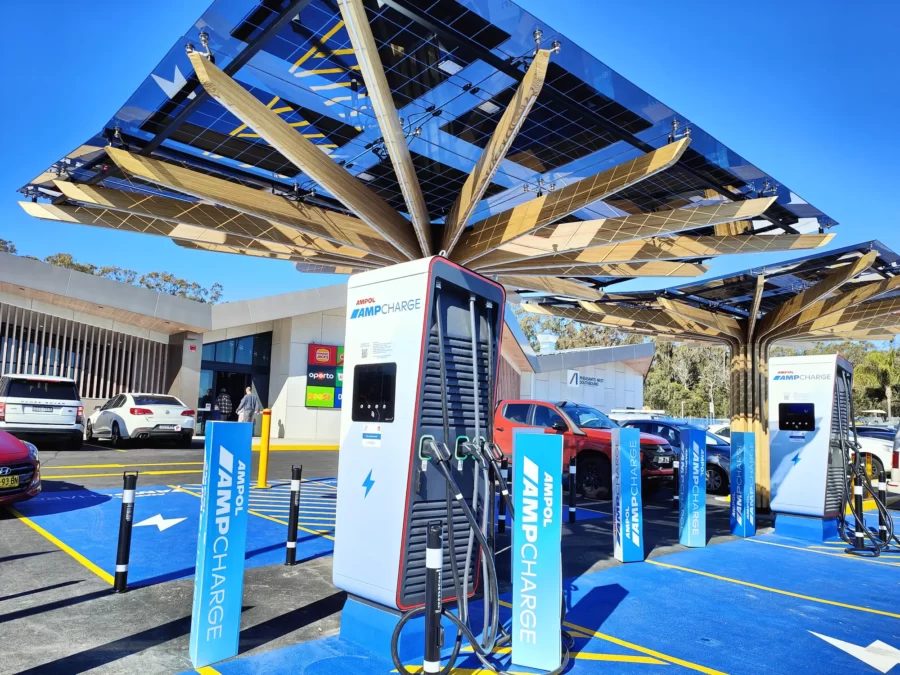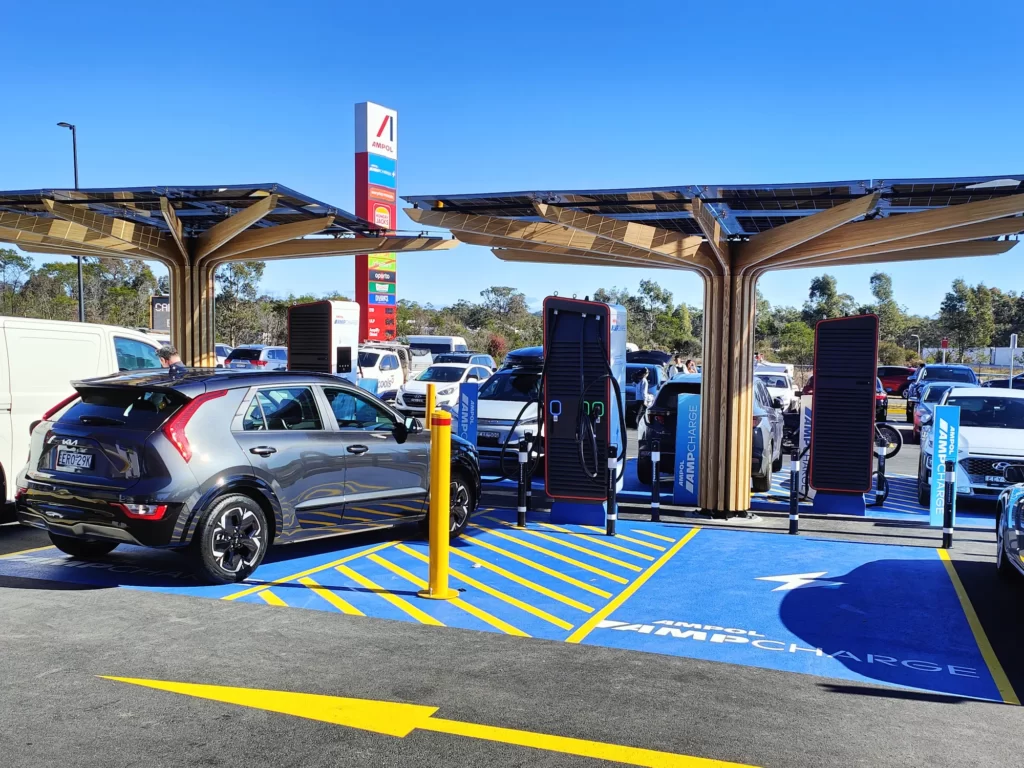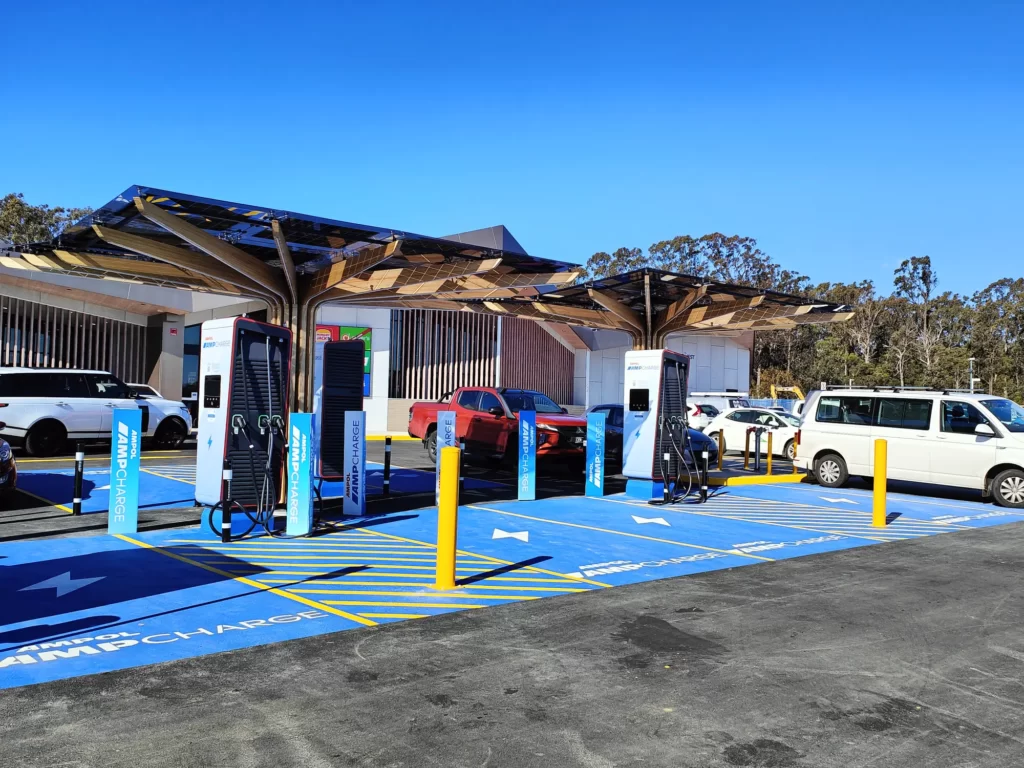During my recent range and efficiency test drive in the Kia Niro EV S I drove south from Sydney on the Hume Highway to Ampol’s new flagship 6 bay Pheasants Nest South EV charging site (read my review) and was surprised at what I saw.

Ampol had paid for a shade structure, which is rarely encountered at an Australian EV charging site.
That’s not all though. They haven’t just put an umbrella nearby or a basic colourbond roof. To me it looked like a “solar tree” next to each Hypercharger.
After I returned home I did some research and found out that this is the first location in Australia to feature the Coates Group C3 Canopy and more of them will be installed at the twin Pheasants Nest North EV Charging site later this year.
Cleverly the C3 Canopy not only has solar panels on the roof for use by the charger but it stores embodied carbon via the cross laminated timber structure and captures rain which runs down the panels into the pillar to feed water tanks below.
Glass under solar panels can be clear or tinted and the gap between panels will be rubber sealed for shelter from rain.
Coates Group Business Development Manager Lesley Keiller told me that:
Based on Pheasants Nest South as an example
- There are 2 x 16 solar panels on the C3 canopies and their solar generation is between 8541 – 12264 KWh/year. This is assuming 5 hrs of direct daylight.
- Rain water harvest is on average 37,694 L/year. This is based on Sydney annual rainfall.
Keiller said that these figures can be recalculated per site, anywhere, to facilitate ROI on a case by case basis. Of course calculations depend greatly on scale of deployment, energy and water rates, grants etc.
What do you think of the Pheasants Nest South “solar trees”?



Your dedication to this sector is so infectious, thank you for sharing we are certainly hoping to aid more businesses on their sustainable journey.
Thanks Lesley 🙂
Don’t they need to be bigger to shade the cars?